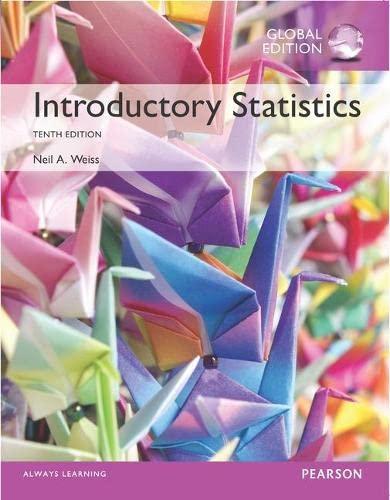Consider the random experiment of tossing a coin once. There are two possible outcomes for this experiment,
Question:
Consider the random experiment of tossing a coin once. There are two possible outcomes for this experiment, namely, a head (H) or a tail (T).
a. Repeat the random experiment five times—that is, toss a coin five times—and record the information required in the following table.
(The third and fourth columns are for running totals and running proportions, respectively.)
Toss Outcome Number of heads Proportion of heads 1
2 3
4 5
b. Based on your five tosses, what estimate would you give for the probability of a head when this coin is tossed once? Explain your answer.
c. Now toss the coin five more times and continue recording in the table so that you now have entries for tosses 1–10. Based on your 10 tosses, what estimate would you give for the probability of a head when this coin is tossed once? Explain your answer.
d. Now toss the coin 10 more times and continue recording in the table so that you now have entries for tosses 1–20. Based on your 20 tosses, what estimate would you give for the probability of a head when this coin is tossed once? Explain your answer.
e. In view of your results in parts (b)–(d), explain why the frequentist interpretation cannot be used as the definition of probability.
Odds. Closely related to probabilities are odds. Newspapers, magazines, and other popular publications often express likelihood in terms of odds instead of probabilities, and odds are used much more than probabilities in gambling contexts. If the probability that an event occurs is p, the odds that the event occurs are p to 1 − p. This fact is also expressed by saying that the odds are p to 1 − p in favor of the event or that the odds are 1 − p to p against the event. Conversely, if the odds in favor of an event are a to b (or, equivalently, the odds against it are b to a), the probability the event occurs is a/(a + b).
For example, if an event has probability 0.75 of occurring, the odds that the event occurs are 0.75 to 0.25, or 3 to 1; if the odds against an event are 3 to 2, the probability that the event occurs is 2/(2 + 3), or 0.4. We examine odds in Exercises 4.36–4.40.
Step by Step Answer:






